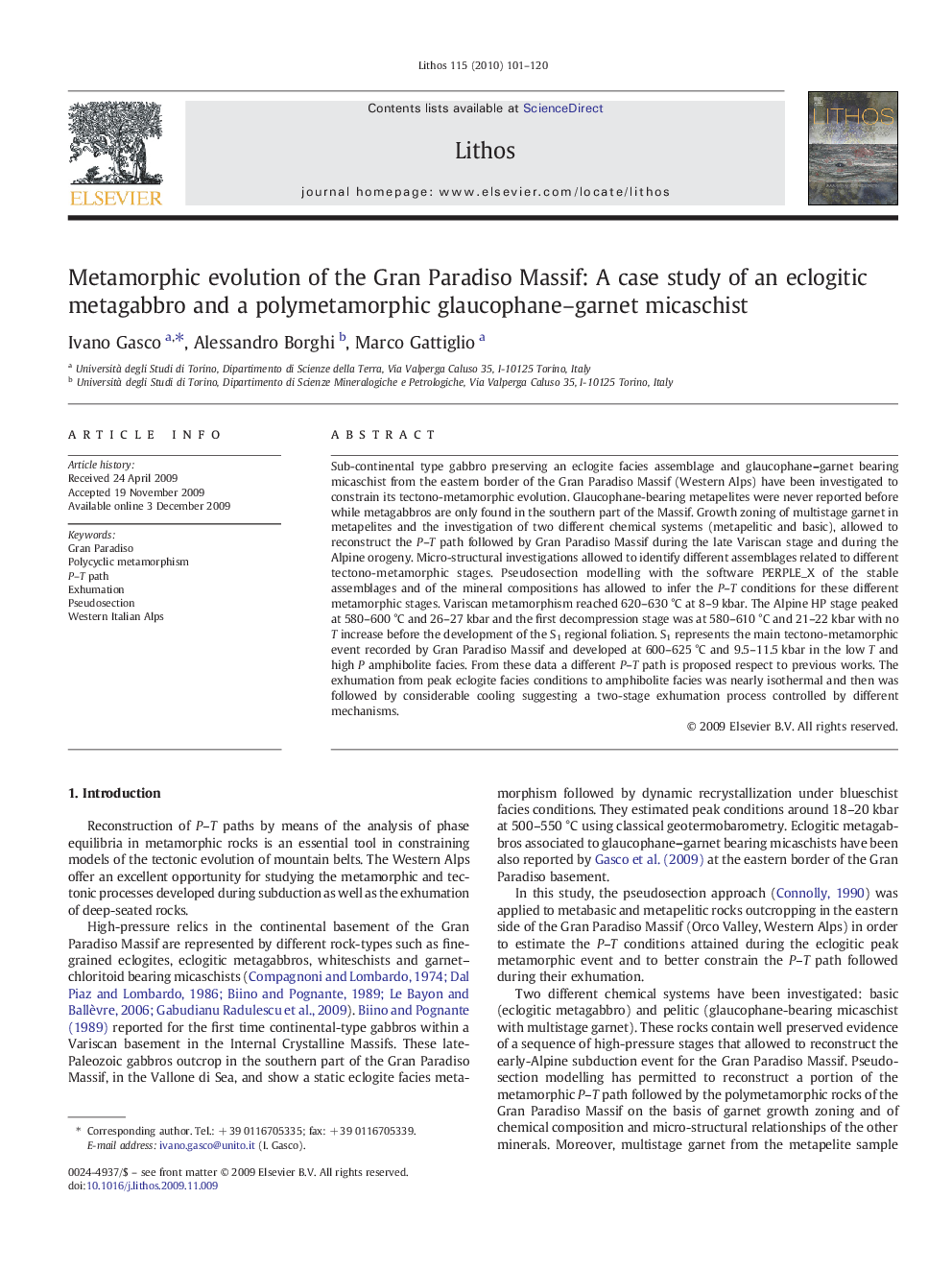| کد مقاله | کد نشریه | سال انتشار | مقاله انگلیسی | نسخه تمام متن |
|---|---|---|---|---|
| 4717033 | 1638735 | 2010 | 20 صفحه PDF | دانلود رایگان |

Sub-continental type gabbro preserving an eclogite facies assemblage and glaucophane–garnet bearing micaschist from the eastern border of the Gran Paradiso Massif (Western Alps) have been investigated to constrain its tectono-metamorphic evolution. Glaucophane-bearing metapelites were never reported before while metagabbros are only found in the southern part of the Massif. Growth zoning of multistage garnet in metapelites and the investigation of two different chemical systems (metapelitic and basic), allowed to reconstruct the P–T path followed by Gran Paradiso Massif during the late Variscan stage and during the Alpine orogeny. Micro-structural investigations allowed to identify different assemblages related to different tectono-metamorphic stages. Pseudosection modelling with the software PERPLE_X of the stable assemblages and of the mineral compositions has allowed to infer the P–T conditions for these different metamorphic stages. Variscan metamorphism reached 620–630 °C at 8–9 kbar. The Alpine HP stage peaked at 580–600 °C and 26–27 kbar and the first decompression stage was at 580–610 °C and 21–22 kbar with no T increase before the development of the S1 regional foliation. S1 represents the main tectono-metamorphic event recorded by Gran Paradiso Massif and developed at 600–625 °C and 9.5–11.5 kbar in the low T and high P amphibolite facies. From these data a different P–T path is proposed respect to previous works. The exhumation from peak eclogite facies conditions to amphibolite facies was nearly isothermal and then was followed by considerable cooling suggesting a two-stage exhumation process controlled by different mechanisms.
Journal: Lithos - Volume 115, Issues 1–4, March 2010, Pages 101–120